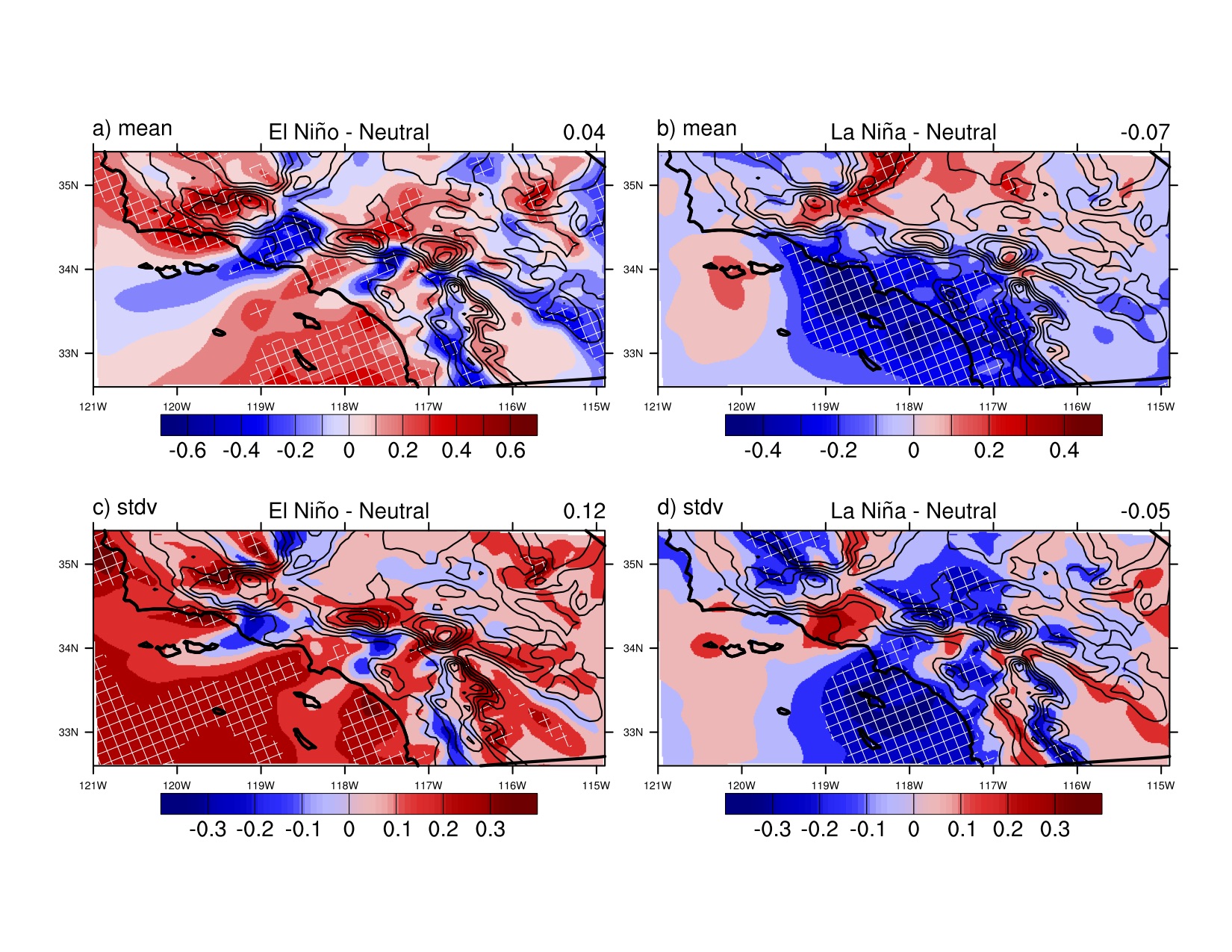
|
||||||||||||||||
|

Regional Climate Dynamics El Niño每Southern Oscillation impacts on winter winds over Southern CaliforniaIt is well known that
California precipitation is heavily influenced by the El
Niño每Southern Oscillation (ENSO) phenomenon. The region tends
to be wetter during the positive ※El Niño§ phase and drier
during the negative ※La Niña§ phase. However, little attention
has been paid to understanding how other climatic features may
be impacted by the ENSO phenomenon. In this study, we
investigated the relationship, or ※teleconnections,§ between
near-surface winds over California and ENSO using a 6-km
resolution regional climate simulation spanning 1959每2001
produced by the MM5 model. In response to the equatorward and eastward extension of the subtropical jet stream and storm tracks in the Northern Hemisphere, Southern California experiences general increases in average wind speed and wind speed variability during El Niño. More than half of the Southern California region experiences increased mean wind speeds during El Niño, while nearly 80% of the region experiences increased wind speed variability (Figure 1). Conversely, a westward and poleward shift to the jet stream and storm tracks during La Niña leads to general decreases in the mean and variability of winds over Southern California. A majority of the Southern California region experiences decreased wind speed variability during La Niña events (Figure 1).  Figure 1: Average differences of the mean and standard deviation (stdv) for daily-mean 10 m wind speed anomalies between El Niño (a, c) and La Niña (b, d) winters compared to neutral winters. Contour interval is 0.1. Positive differences are shaded red and negative differences are shaded blue. Regions of significant differences (at the 90% level) are hatched. The domain-average value is reported on the top right for each plot. Unit in all panels is meters per second. By grouping daily circulation patterns into distinct categories, it is found that onshore flows occur more frequently during El Niño, while Santa Ana flows occur less frequently. This leads to greater winds and wind variability across the Southern California Bight and weaker winds in mountain passes where Santa Ana每like outflow is typically found. Reduced Santa Ana events also help explain decreased average wind speeds within the major mountain passes. Strong outflow through these regions associated with the Santa Ana regime becomes replaced by weaker winds of the more frequently occurring onshore regime. During La Niña, the onshore regime occurs less frequently than usual with corresponding higher occurrences of the common northwesterly regime. This likely explains lower average wind speeds and wind speed variability through much of the coastal zone. Reduced onshore events yield increased vacillation between strong Santa Ana winds and weak northwesterly winds within major mountain passes, and increased wind variability in these regions during La Niña. Download
the publication (Berg et al. 2013) describing these results in
more detail. Learn
more about our group's research
|
|||||||||||||||
